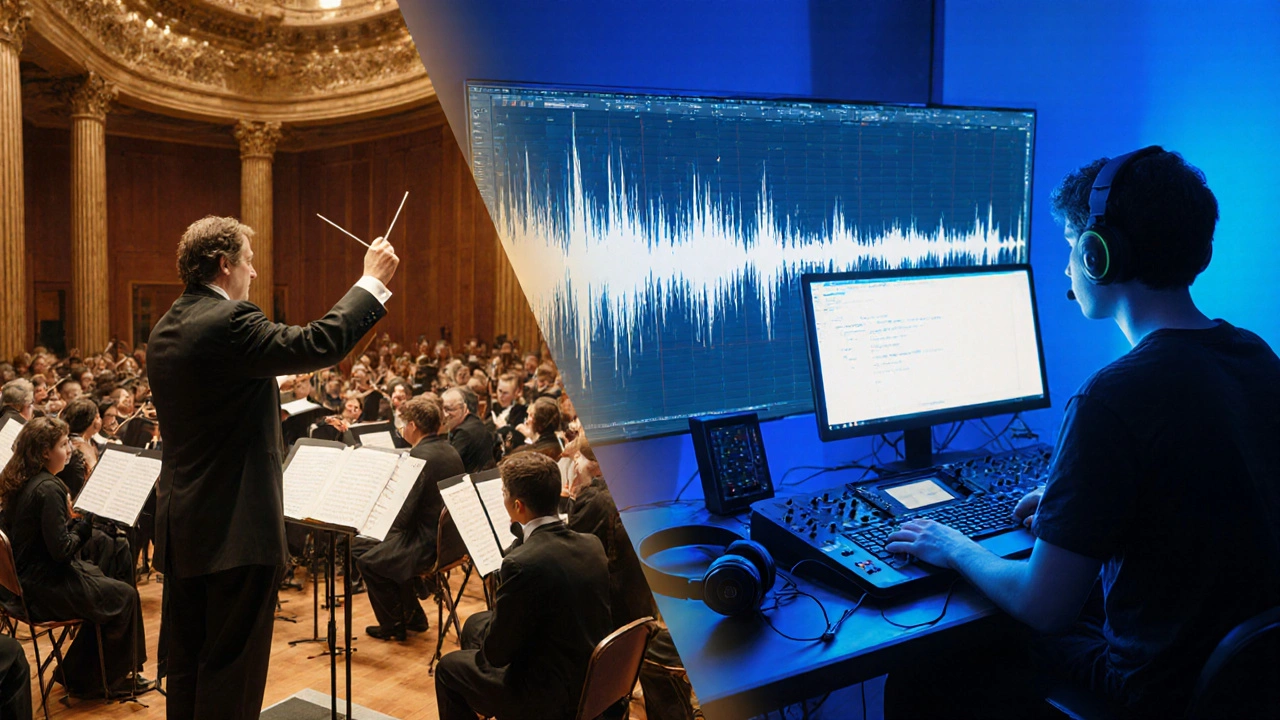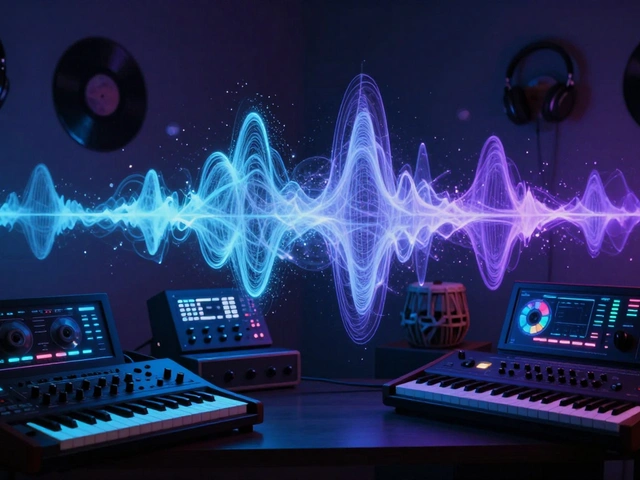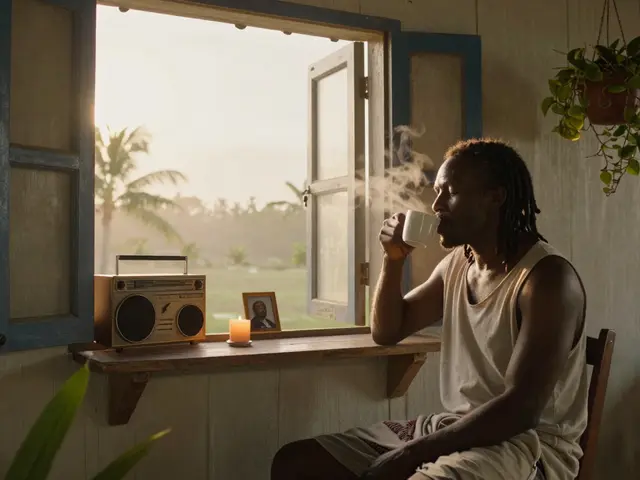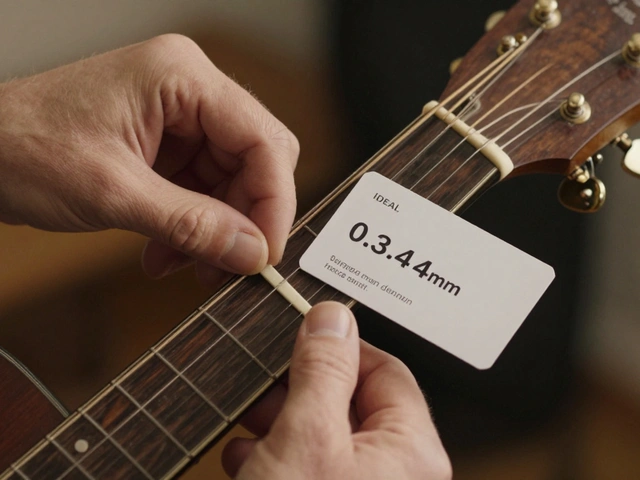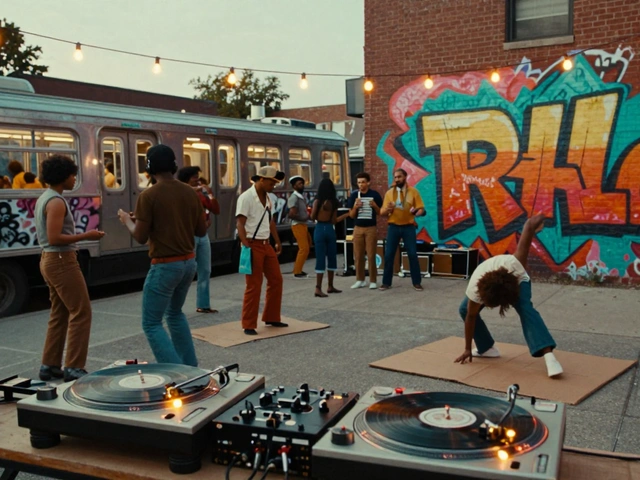Ever wondered why a few seconds of a centuries‑old symphony can make a chart‑topping hit feel richer? The answer lies in the surprising ways Classical music seeps into Pop culture today. From viral TikTok clips to blockbuster movie trailers, the old‑world soundscape is still rewriting the rules of what’s “modern.” Below we’ll unpack the how, why, and where you can hear this cross‑generational dialogue.
Why Classical Music Still Resonates
Classical works were written to evoke strong emotion, using layered orchestration, memorable motifs, and dramatic crescendos. Those same tools are exactly what pop producers chase when they want a hook that sticks. A 2023 Nielsen study showed that songs containing a recognisable classical sample earned 12% more streams in their first month compared with comparable tracks without such a sample. The numbers prove that listeners, even subconsciously, associate those rich harmonic textures with credibility and depth.
Signature Classical Motifs in Pop Hits
Let’s put the theory to the test. Here are a few chart‑toppers that borrowed directly from the classical canon:
- "Bittersweet Symphony" by The Verve - re‑imagined an orchestral loop from The Rolling Stones’ sample of The Andrew Goldberg Symphony.
- "We Are the Champions" (Coldplay’s live cover) - interpolates the triumphant brass of Beethoven’s Symphony 5.
- Billie Eilish’s "You Should See Me in a Crown" - built around a minimalist piano figure reminiscent of Mozart’s Eine kleine Nachtmusik.
These songs prove a simple truth: a familiar classical phrase can instantly elevate a pop arrangement from ordinary to iconic.
Sampling and Remix Culture
Hip‑hop and EDM have turned sampling into an art form. Producers dig through vinyl crates, digital archives, and even YouTube uploads to find that perfect baroque line or Romantic swell. For instance, Kanye West’s "Power" samples King Kong’s reinterpretation of the String Quartet No. 3 by Beethoven, while Swedish DJ Avicii’s "Levels" layers a vocal chop over a synth that mirrors the uplifting rise of Tchaikovsky’s 1812 Overture. The result? A fresh track that feels both nostalgic and entirely new.
Film, TV, and Advertising: The Ultimate Playground
When a blockbuster trailer needs to convey epic stakes, the go‑to source is classical. Think of the Star Wars pre‑quels using John Williams (who himself drew heavily from Wagner). Or the recent TikTok ad for a sneaker brand that paired a marching band rendition of Vivaldi’s Four Seasons with a modern beat. These placements do more than set a mood-they introduce younger audiences to works they might otherwise never hear.
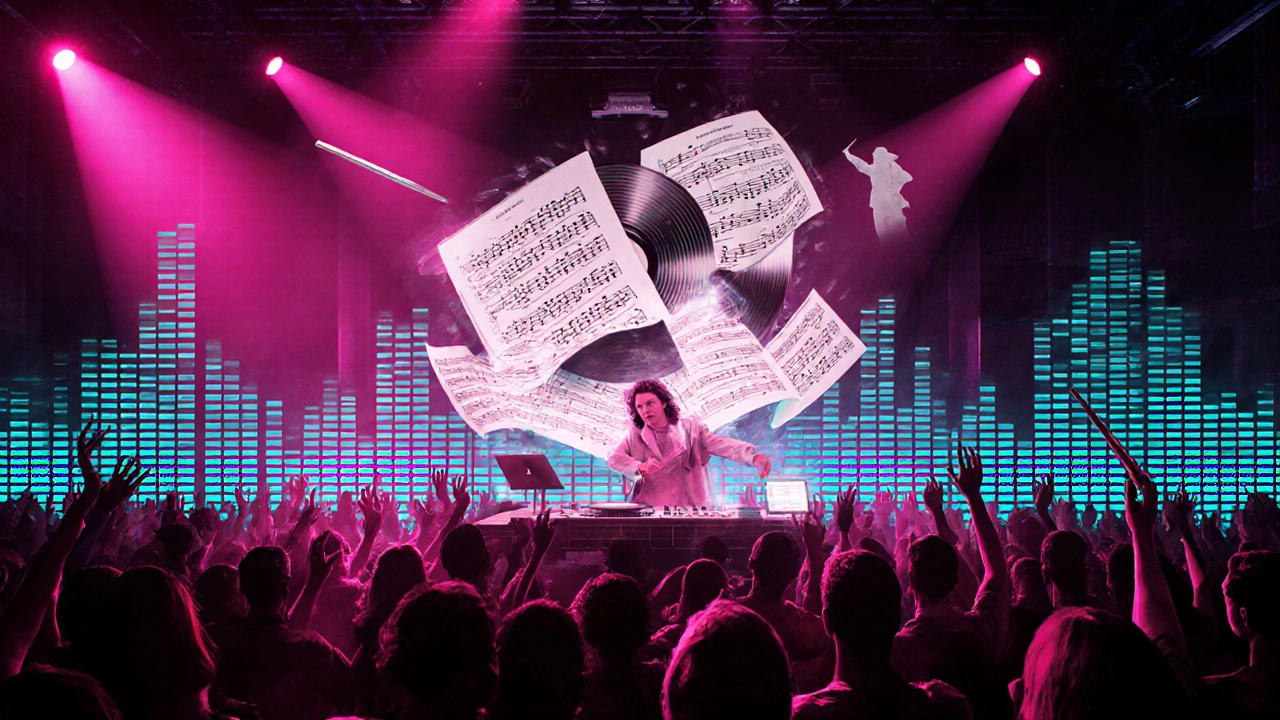
Streaming Platforms and Algorithmic Recommendations
Spotify’s "Classical Crossover" playlists now boast over 5 million followers. Algorithms notice when a listener streams a pop track that samples a symphonic piece and suggest the original composition, creating a two‑way traffic flow. This blurring of genre boundaries not only boosts streams for composers like John Williams but also fuels a deeper appreciation for the original works.
Collaboration Between Classical Artists and Pop Stars
Beyond sampling, direct collaborations are on the rise. The London Symphony Orchestra partnered with BTS for a live performance of "Euphoria," rearranging the Korean pop hit with full brass and strings. Likewise, violinist Lindsey Stirling’s fusion of electronic beats and virtuoso violin playing has amassed over 3 million subscribers on YouTube, proving that audiences love to see classical technique in a modern context.
Changing Perception: From Elite to Everyday
Historically, classical music was seen as reserved for concert halls and academia. Today, a teenager might hear a Beethoven motif in a meme soundbite, while a commuter discovers a Mozart concerto on a playlist labelled “Feel‑Good Pop.” The stigma is fading, replaced by a perception of classical pieces as raw material for creative remixing and storytelling.
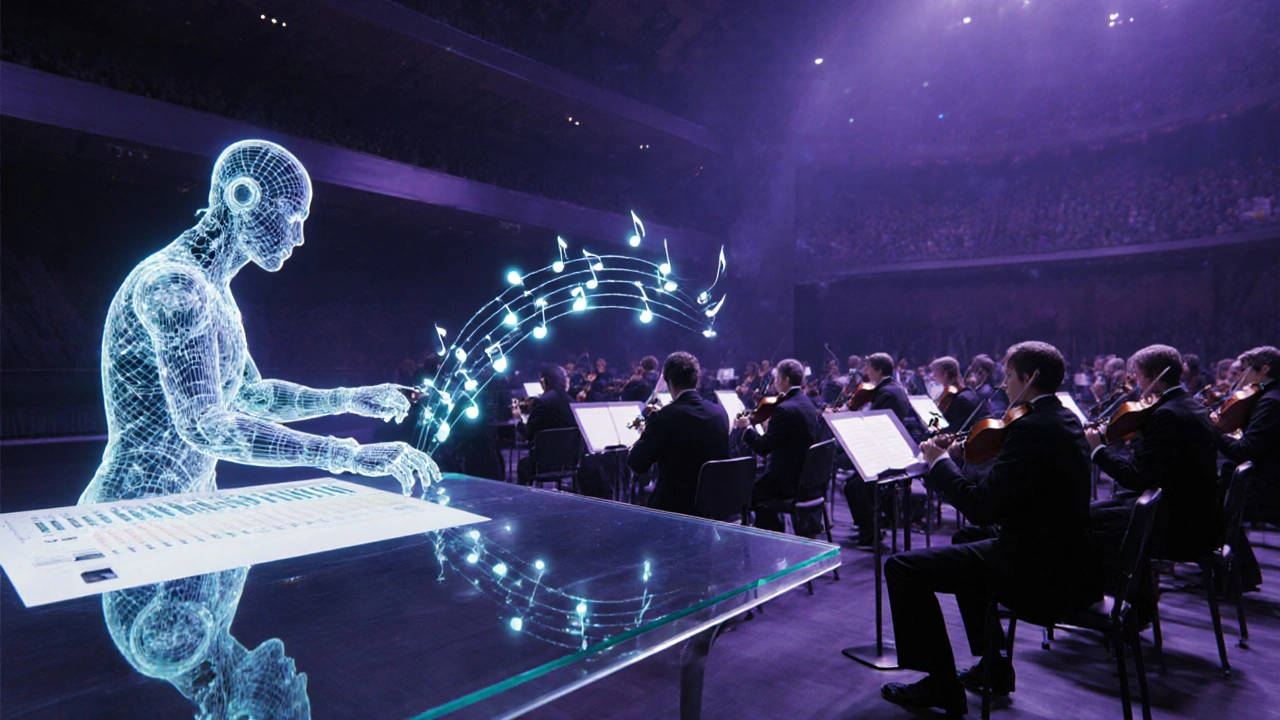
Quick Checklist for Artists Wanting to Tap Classical Influence
- Identify a recognizable motif (e.g., the first four notes of Beethoven’s 5th).
- Clear the rights - many works are public domain, but specific recordings may require licensing.
- Blend the motif with contemporary instrumentation (synths, 808s, or acoustic guitars).
- Use arrangement software (Logic, Ableton) to transpose the theme into your song’s key.
- Test the track with a sample audience; watch for emotional spikes.
Comparative Table: Classic Pieces vs. Modern Songs
| Original Piece | Composer | Year (Composition) | Modern Track | Artist | Year (Release) |
|---|---|---|---|---|---|
| "Pomp and Circumstance" | Edward Elgar | 1901 | "All About That Bass" (sample) | Meghan Trainor | 2014 |
| "Ode to Joy" (9th Symphony) | Ludwig van Beethoven | 1824 | "Harder, Better, Faster, Stronger" (re‑interpolation) | Daft Punk | 2001 |
| "Air on the G String" | Johann Sebastian Bach | 1731 | "Feel Good Inc." (background strings) | Gorillaz | 2005 |
| "Spring" from The Four Seasons | Antonio Vivaldi | 1725 | "Bad Guy" (violin riff) | Billie Eilish | 2019 |
| "Canon in D" | Johann Pachelbel | 1680 | "Havana" (bridge chord progression) | Camila Cabello | 2017 |
These examples illustrate a simple pattern: a timeless melody meets modern production, creating a bridge that feels both fresh and familiar.
Future Outlook
As AI‑generated music becomes mainstream, we’ll likely see algorithms suggesting classical motifs in real time, turning the creative process into a dialogue between human composers and centuries‑old scores. The impact of classical music on pop culture isn’t fading-it’s evolving into a digital partnership that could redefine how we think about “originality.”
Key Takeaway
Whether you’re a bedroom producer, a major label A‑&R rep, or just a curious listener, recognizing the power of classical music as a cultural catalyst will help you understand why the most successful pop songs often sound like they borrowed a page from a symphony.
How can I legally sample a classical piece?
Most compositions by composers who died over 70 years ago are public domain, so the underlying melody is free to use. However, you must still clear the rights to any specific recording you sample, unless you create your own rendition.
Why do listeners react positively to classical samples?
Classical motifs often contain strong, memorable hooks and dramatic dynamics that trigger emotional responses. When paired with contemporary beats, they offer a sense of familiarity while still sounding innovative.
What are some modern genres that borrow heavily from classical music?
Hip‑hop, EDM, pop, and even indie folk frequently incorporate orchestral strings, piano arpeggios, or full symphonic arrangements. Artists like Kanye West, Avicii, and Lindsey Stirling are prime examples.
Can classical music help a pop song chart higher?
Data from streaming platforms suggests that tracks featuring a recognisable classical sample often enjoy higher initial streaming numbers and greater playlist inclusion, which can translate to better chart performance.
Where can I find royalty‑free classical recordings for my productions?
Websites like Musopen, the Internet Archive, and certain university libraries host public‑domain recordings that are free to download and use in commercial projects.

